
If you’re planning on vacationing in Korea this summer, be sure to check out at least one of the following coastal destinations! Korea is surrounded on three sides by water, giving it plenty of beaches in a variety of shapes and sizes that offer a welcomed escape from everyday life. Since most beaches in Korea officially open in June or July and close towards the end of August, visitors have only a few months to splash around in the water and soak up the rays. But don’t worry if you miss out on the official summer beach season, as there are plenty of sightseeing activities that you can enjoy all year round!
Scenic views along Korea’s eastern coast
The East Sea, known for its clear waters and expansive, white sandy beaches, is one of the most popular summer vacation spots in the nation. People come from near and far to catch the stunning view of the sun rising over the East Sea, and most beaches in the area even hold an annual Sunrise Festival. Although these festivals only take place on New Year’s Day, the sight of the sun slowly peeking over the ocean’s horizon is a mesmerizing scene any day of the year.
Guryongpo Beach in Pohang-si, Gyeongsangbuk-do
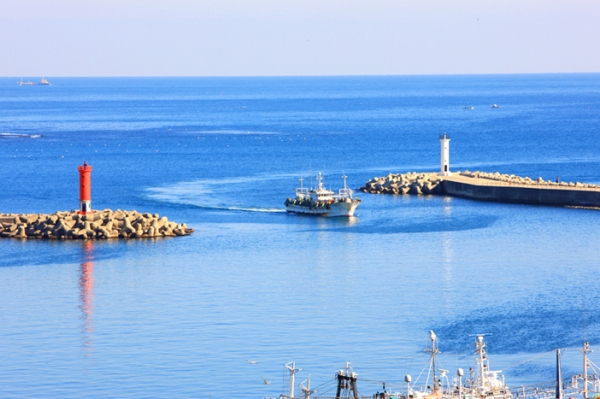
Guryongpo Beach is about 24 kilometers away from Pohang and 1.5 kilometers from Guryongpo-eup. Thanks to the gentle slope of the ocean floor and the clean seawater, Guryongpo Beach is a favorite vacation spot for swimming enthusiasts. The beach is also popular among fishermen, many of whom troll their lines in Yeongilman Bay.
Guryongpo Beach
- Address: 6, Homi-ro 426beon-gil, Nam-gu, Pohang-si, Gyeongsangbuk-do (경상북도 포항시 남구 구룡포읍 호미로426번길 6)
- Swimming period: TBD
Sokcho Beach in Sokcho-si, Gangwon-do
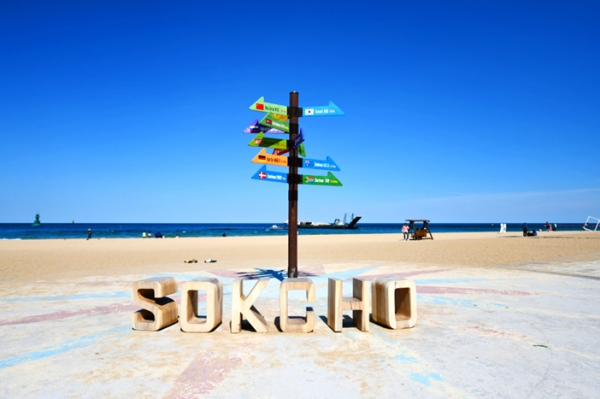
Sokcho Beach is well known for the picturesque pine trees that stand proudly along its white sandy coast. One of the perks of this particular beach is that there are many tourist attractions in the surrounding area, including Yeongnangho Lake and Seoraksan Mountain, one of Korea’s most famous mountains.
Given the beach’s range of facilities and nearby accommodations, Sokcho Beach is a convenient place for a weekend trip. Visitors can even rent a fishing rod and go fishing at nearby Jodo Island, or walk towards the pier to get some fresh hoe (sliced raw fish) at one of the local fish markets.
One of the biggest draws of Sokcho Beach is that it is located near Sokcho Express Bus Terminal, making it easy to find for even first-time visitors. Festivals held at Sokcho Beach include the Sunrise Festival on January 1 of every year, and other events that take place during the beach swimming period between July and August for all visitors to enjoy.
Sokcho Beach
- Address: 190, Haeoreum-ro, Sokcho-si, Gangwon-do (강원도 속초시 해오름로 190)
- Swimming period: TBD
Gyeongpo Beach in Gangneung-si, Gangwon-do

Gyeongpo Beach is the largest beach on the east coast, and is only about a kilometer away from Gyeongpodae Pavilion, famous for its sunrise view. Perhaps the most striking characteristic of Gyeongpo Beach is its fine powdery sand, which is perfect for barefoot walks along the beach. There is also a beautiful pine tree forest nearby for leisure walks. Beach activities such as banana boating, Jet Skiing, and waterskiing are popular as well. In addition, Gyeongpo Summer Music Festival is held every evening between the end of July and early August, featuring performances from famous bands and hip-hop groups for a beachside party atmosphere.
Gyeongpo Beach
- Address: 514, Changhae-ro, Gangneung-si, Gangwon-do (강원도 강릉시 창해로 514)
- Swimming period: TBD
Naksan Beach in Yangyang-gun, Gangwon-do

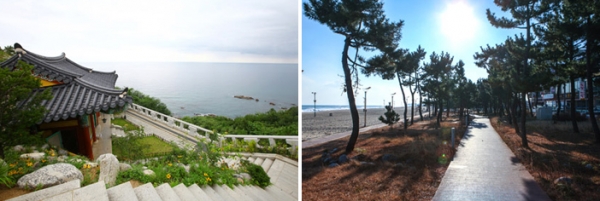
With a sandy shoreline stretching over 1,810 meters, Naksan Beach is one of the top beaches in Gangwon-do, drawing in countless visitors each year. The beach runs along clean waters, bordered by rows of pine trees. In addition to its natural beauty, Naksan Beach also has a variety of water activities such as riding on a banana boat or Jet Ski for those looking for more adventure.
The beach is also a top pick for those who are interested in Korea’s traditional culture, as it is close to Naksansa Temple and Uisangdae Pavilion, which was built to commemorate Great Monk Uisang. As an added bonus, the pavilion is also one of the best places in the area to view the sunrise.
Naksan Beach
- Address: 59, Haemaji-gil, Yangyang-gun, Gangwon-do (강원도 양양군 강현면 해맞이길 59)
- Swimming period: TBD
Eco experiences along Korea’s western coast
Beaches along the western coast are easily accessible from Seoul and therefore extremely popular among citizens and travelers who may not have a lot of time on their hands. The beaches of the western coast are also great places to catch the sunset, and many have tidal flats teeming with small marine life.
Daecheon Beach in Boryeong-si, Chungcheongnam-do
Daecheon Beach is the largest beach on the west coast, and is known for its shallow and calm waters. The sand on the upper shores of Daecheon Beach is especially soft and easy to wash off because it is composed of finely eroded shells. Closer to the shoreline, the sand is hard packed. These two varieties of sand allow visitors to enjoy both leisure walks and sand scrubs. Daecheon Beach is also home to the annual Boryeong Mud Festival. In winter, the beach draws large crowds again as locals and tourists flock to the shores for the annual Sunset Festival.
Daecheon Beach
- Address: 123, Meodeu-ro, Boryeong-si, Chungcheongnam-do (충청남도 보령시 머드로 123)
- Swimming period: TBD
Eurwangni Beach in Jung-gu, Incheon

Eurwangni Beach, located near Seoul and Incheon International Airport, is a popular beach, both for its gorgeous views and clean white sand. The beach’s shallow water also provides the perfect place for children to go swimming. Amenities nearby include a number of lavish resorts and restaurants that serve fresh seafood. Having dinner outside on the terrace of one of these restaurants is the perfect way to watch the final rays of sunlight as they disappear over the horizon! Beachgoers can also rent a fishing boat or a fishing rod to fish off the side of the pier. A variety of beach festivals take place at Eurwangni every summer.
Eurwangni Beach
- Address: 15, Eurwang-ro 13beon-gil, Jung-gu, Incheon (인천광역시 중구 을왕로13번길 15)
- Swimming period: TBD
Muchangpo Beach in Boryeong-si, Chungcheongnam-do
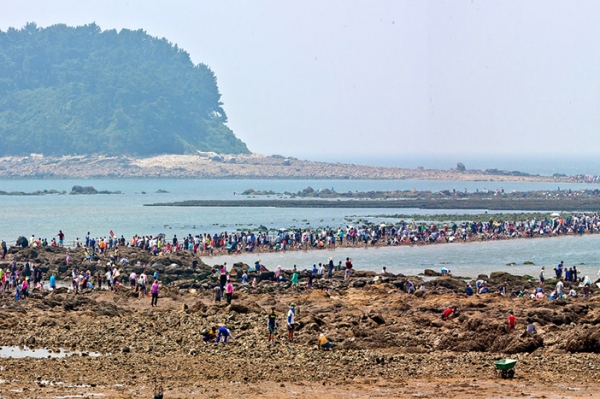
Muchangpo Beach is particularly famous for what is known as the "Moses Miracle," a natural phenomenon in which extreme tides reveal the seafloor for only a few short hours two or three days a month (around the 15th and 30th days of the lunar calendar). The exposed sea floor makes a path about 1.5 kilometers that reaches all the way from the beach to Seokdaedo Island. The Muchangpo Mystic Sea Road Festival celebrates this occurrence every year in August or September, with the exact timing varying each year. The beach is also known for its scenic coastal drive, clusters of pine trees, and beautiful sunsets.
Muchangpo Beach
- Address: 10, Yeollinbada 1-gil, Boryeong-si, Chungcheongnam-do (충청남도 보령시 웅천읍 열린바다1길 10)
- Swimming period: TBD
Emerald waters of Korea’s southern sea
There are countless islands, and therefore beaches, along the southern coast of Korea. The South Sea is also home to Jeju Island, a favorite tourist site in Korea. Islands in the South Sea provide visitors with vastly different experiences from those along the east or west coast. Each beach has its own unique style, meaning that there are almost limitless options for visitors willing to travel a little further from Korea’s capital.
Haeundae Beach in Haeundae-gu, Busan
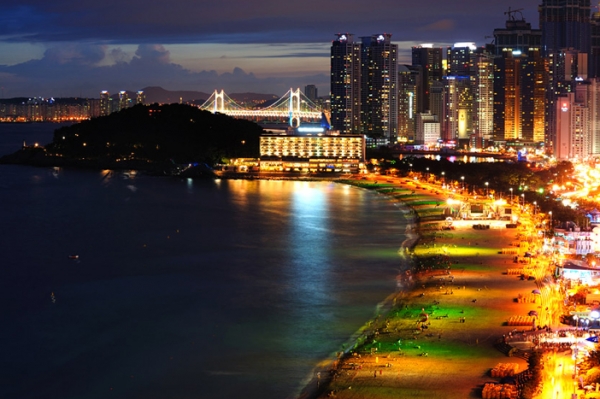

The slope of Haeundae Beach is shallow and there is little change in tide, making this beach perfect for swimming. The beach is famous for its views of the sunrise and moonrise as seen from Haewoljeong Pavilion atop Dalmajigogae Hill. Haeundae’s Dalmaji-gil Road, which is located between Haeundae Beach and Songjeong Beach, is another recommended spot for a romantic view of the moonlight glistening off the water’s surface.
Haeundae Beach is also famous for its many cultural events and festivals that are held throughout the year. Visitors can enjoy Haeundae Sand Festival in summer; Busan International Film Festival in fall; and the New Year Festival and Polar Bear Swimming Contest in winter.
Haeundae Beach
- Address: 264, Haeundaehaebyeon-ro, Haeundae-gu, Busan (부산광역시 해운대구 해운대해변로 264)
- Swimming period: June 1 – August 30, 2020 (Subject to change)
Hyeopjae Beach in Jeju-si, Jeju-do
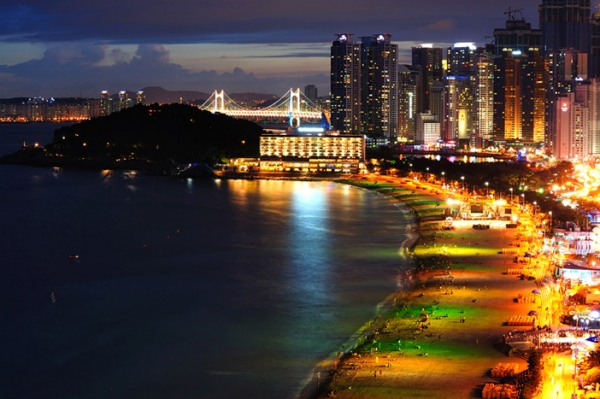
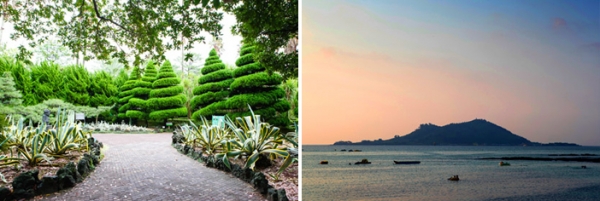
Hyeopjae Beach is one of the best beaches on Jeju Island for swimmers, since the waters are shallow with no sudden drops. Tiny shells in the sand give the beach a silver sheen and make for a firm feel that is perfect for walks along the water’s edge. Once you get in the water, you’ll be pleased to discover that the water is so clean that you can clearly see your toes!
Hallim Park, a major tourist attraction, is only 5 minutes away on foot, and is well worth a visit. The park is landscaped with an abundance of subtropical plants and topiaries, and serves as a cool escape from the summer heat. A pleasant beach with plenty of space, Hyeopjae is all the more beautiful for its view of black basalt rocks to one side and Biyangdo Island standing out in the distance.
Hyeopjae Beach
- Address: 329-10, Hallim-ro, Jeju-si, Jeju-do (제주특별자치도 제주시 한림읍 한림로 329-10)
- Swimming period: July 1 – August 31, 2020 (Subject to change)
Jungmun Saekdal Beach in Seogwipo-si, Jeju-do
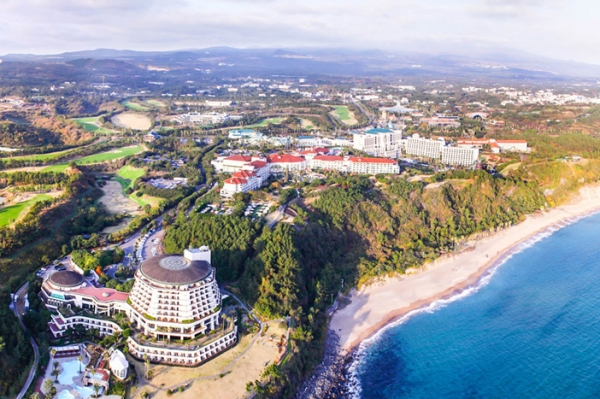
Jungmun Saekdal Beach within Jeju Jungmun Resort is a unique beach comprised of a gradient of black, white, red, and gray sand, as well as the famous black volcanic stone of Jeju Island. To the right of the sandy beach is a natural cave that was created by coastal erosion. Rare plants flourish near the cave, offering a convenient spot for some eco-focused sightseeing. The waves and tides can be rather rough along Jungmun, so while conditions are great for wind surfing, Jet Skiing and other water leisure activities, non-swimmers and young children are advised to stick close to the shoreline under the careful watch of lifeguards.
Jungmun Resort is also home to an aquarium, Yeomiji Botanical Garden, Cheonjeyeon Waterfall, and a cluster of traditional houses typical on Jeju Island. Various events are held along the beach and within the resort complex throughout the year.
Jungmun Saekdal Beach
- Address: Jungmungwangwang-ro 72beon-gil, Seogwipo-si, Jeju-do (제주특별자치도 서귀포시 중문관광로72번길)
- Swimming period: July 1 – August 31, 2020 (Subject to change)
Source: http://english.visitkorea.or.kr/


